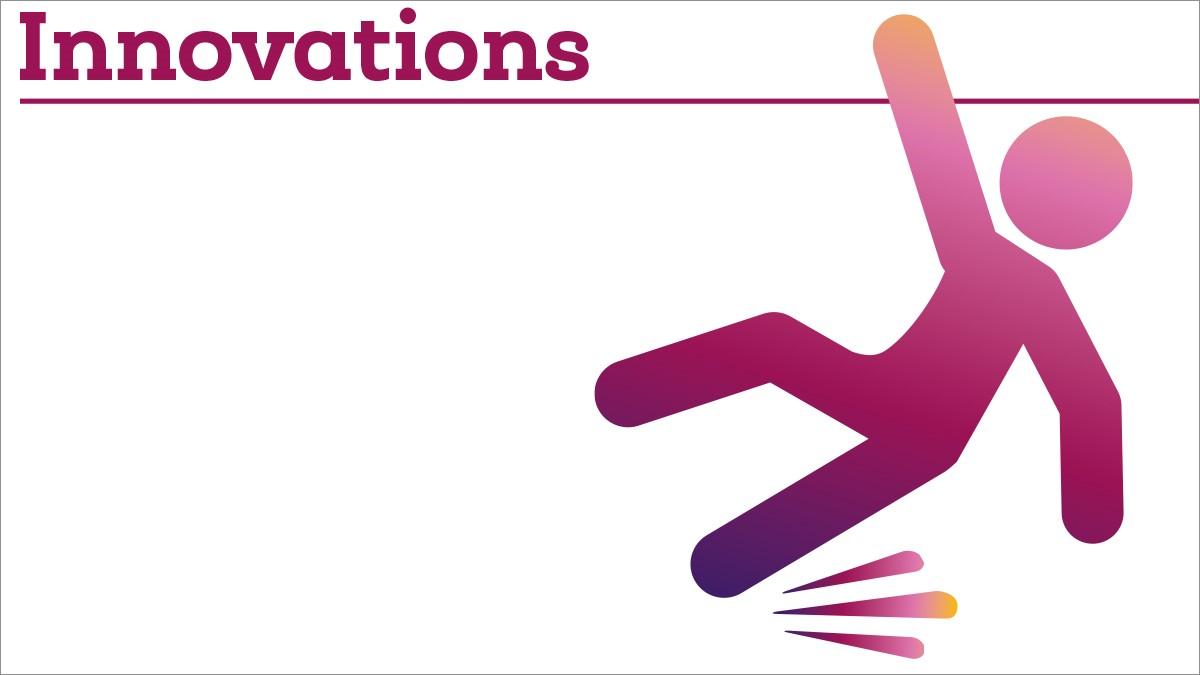Specialist physiotherapist Louise Egan helped develop the integrated falls pathway...

With growing numbers of referrals into the falls prevention service, it was clear that doing more of the same wasn’t a sustainable option.
South Tees Hospitals NHS Trust had a CCG commissioned falls service, which started in 2007 and had seen significant year on year growth in referral rates.

Despite this, the team had operated on the same resource and the service had become reactive rather than proactive. As a result, the team decided to review the service, identify key areas for improvement and consider opportunities to develop a system-wide approach to falls prevention.
The goals for the review were:
- reduced falls and injuries
- a region-wide falls pathway
- co-ordinated, individualised risk assessment and interventions
- improved partnership working
The new integrated falls prevention strategy was developed using a tiered approach to ensure the maximum number of people benefited from falls prevention information, support and guidance and a single point of access for referrals was agreed to streamline referrals.
Those people in tier 0/1 now receive primary falls prevention advice supported by health promotion and public health messages. This intervention is provided by a wide range of services such as local council housing providers, fire brigade and voluntary/charitable organisations, for example.
In tier 2, people would ordinarily be in contact with health and social care, and receive secondary falls prevention advice and support based upon a multifactorial risk assessment and interventions based on NICE guidelines.
Those people in tier 3 require specialist falls assessment services for complex cases that require specific input.
Staff from all sectors who deliver the interventions in tiers 0-3 use ‘make every contact count’ and understand that they have a role to play in public health service delivery.
To support the transformational pathway, Louise Egan and her colleagues have developed:
- a rolling programme of training to increase falls awareness and to support each service area in managing the risk of falls
- online and paper-based ‘self-help’ resources to promote self-care for the public
- a website steady on your feet
- a paper-based falls prevention guide and home safety checklist for those without access to the internet
- electronic and paper inpatient and community falls assessment tools based on RCP/NICE guidelines
Outcomes
The website was at the heart of the integrated pathway. Website analytics over the three-month period Sept-Dec 2020 showed 1,539 hits on the site by 1,197 visitors. Of those visitors, 139 self-assessments were started, and 86 were completed (62 per cent completion rate).
The ambitions for the integrated falls strategy against a 2016/17 baseline are 10 per cent reductions in:
- hospital admission rates due to falls
- rate of hip fractures as a result of a fall
- number of falls in care homes
- patient falls within acute settings
Future developments
The team plans to further expand the website to include blogs from local services and a professional specific area where staff working across the pathway can access up to date resources and educational information. Members of the specialist falls team will visit local services on a regular basis to deliver updates and to ensure that they are a visible source of expert advice.
Virtual training delivery will be completed via a narrated presentation to free up the team to offer profession specific training (for example training for community physiotherapists on effective exercise interventions for people at risk of falls).
Top three learning points
- progress doesn’t have to be linear – adapting the initial plan was key as the timing and source of funding* was unknown at the start
- engagement with organisations with strong community links and public health involvement is key for prevention work
- engaging with teams on an individual basis during a staggered roll out is much more likely to bring about change
*With thanks to Ageing Better Middlesbrough for funding the project
Reflections from Kathryn Hodgson, clinical lead for falls and fracture liaison services at South Tees Hospitals NHS Trust
This service redesign showed the importance of collaborative working with a wide range of services and organisations to ensure an all-encompassing strategy.
Working with voluntary and public health organisations as well as health and social care was key in ensuring a preventative approach to falls prevention. Older people now have greater access to falls prevention initiates across the area to suit their own needs. This is ensuring the specialist falls team now sees only those with the most complex falls history.
Interested in innovating?
Check out the Innovations in Physiotherapy database for more practical examples and guidance on how to submit your own work

Number of subscribers: 2
